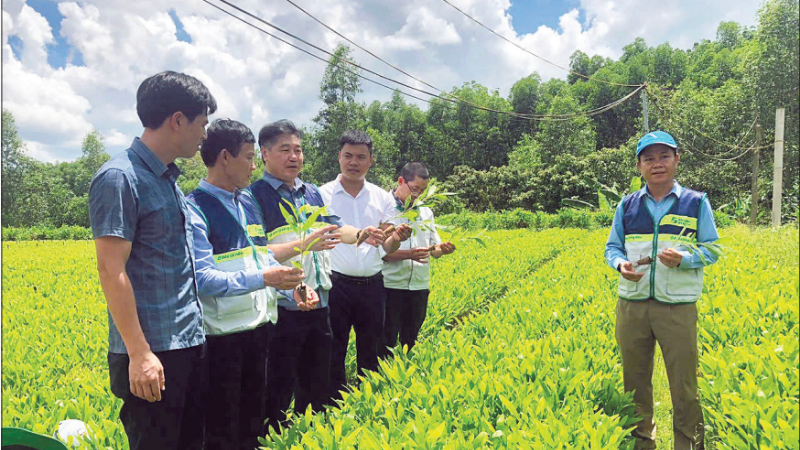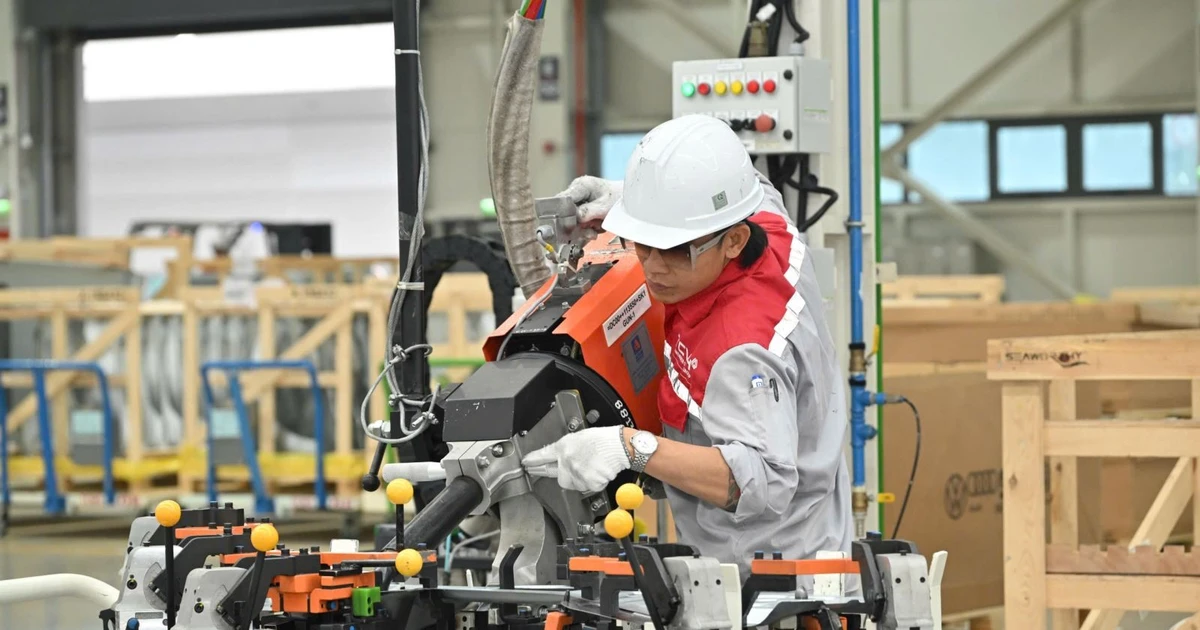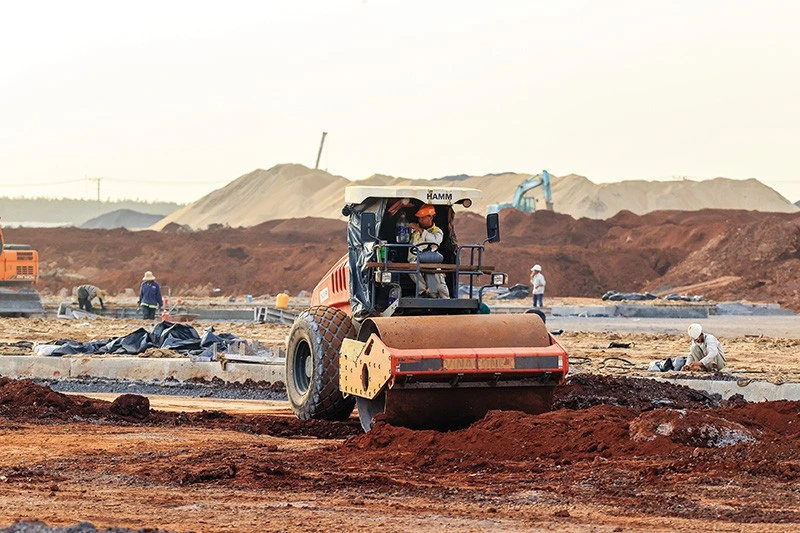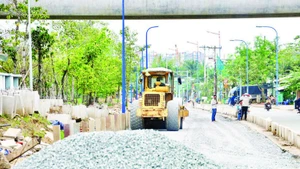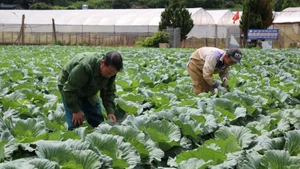Large timber forests with long planting cycles and high biomass accumulation capacity are generating significant economic value, paving the way for developing a modern and efficient wood processing industry.
Enhancing competitiveness for timber products
For nearly four years, the family of Dau Van Thang and many other households in Luong Son Commune (Nghe An Province) have shifted from traditional forestry to large timber forests linked with sustainable forest management certification. With more than 2 hectares of thriving acacia, promising high value, Thang shared: “Since joining the certified forestry project with Biomass Fuel Viet Nam Co., Ltd, we have received training in technical processes and access to quality seedlings with traceable origins. In particular, the company has committed to purchasing timber at prices higher than the market, which makes us very encouraged.”
Le Anh Ngoc Anh, Deputy Head of Forestry Department at Biomass Fuel Viet Nam Co., Ltd, said: “Since 2022, the company has worked with many households in Nghe An province to grow certified acacia forests. Households are supported by covering certification costs and trained in planting and care techniques. This ensures good growth, high-quality timber, high yields, and efficient harvesting processes. According to evaluations, local farming techniques now meet about 90% of the criteria required for sustainable forest management certification.”
Since 2011, the National Agricultural Extension Centre has implemented multiple certified forestry projects nationwide, delivering practical results.
According to Nguyen Huy Thuan, Deputy Head of Crop and Forestry Extension Department (National Agricultural Extension Centre), through these projects, farmers have accessed technical advances and built linkages from production to consuming of legal timber. Typical examples include intensive large timber forest plantation models under sustainable forest management for processing and export during 2022-2024 in Tuyen Quang, Phu Tho, and Bac Giang (formerly) with a scale of 120 hectares. Clonal hybrid acacia trees grow faster, with yields 20 to 25% higher than conventional varieties.
There is also a project on forestry seedling nurseries for plantation material areas during 2022-2024 in Quang Tri and Hue City, covering six nurseries with capacities of 300,000-500,000 acacia seedlings per year. The project supplies high-quality, traceable seedlings that meet standards for sustainable forest management certification. This acacia variety also increases plantation productivity by 20 to 30 cubic metres per hectare, 25 to 30% higher than conventional varieties.
Increasing the rate of forest management certification
Forests certified for sustainable forest management help Viet Nam’s timber products enhance credibility and penetrate deeper into international markets, where demands for origin and quality are increasingly strict. However, the proportion of certified forests remains low. Statistics show that as of June 30, the country had about 680,000 hectares, equivalent to roughly 15% of plantation forests.
On this issue, Nguyen Hoang Tiep, Deputy Director of the Office for Sustainable Forest Management Certification, noted: “Most certified areas are funded by forest owners themselves or through partnerships with wood processing enterprises. At the same time, plantation forests are largely fragmented, mainly managed by households and individuals. With around one million households managing forests, certification is difficult to apply, and maintaining certified areas over the long term is further limited by limited funding. Moreover, plantations mainly consist of small-timber forests with short cycles, small log sizes, and low yields per hectare. Therefore, profits from certified small timber are 10 to 15% lower than uncertified.”
In addition, the forestry sector lacks models of certified large timber plantations combined with non-timber forest product production. Partnerships between households and enterprises in large timber production along the chain from planting to processing and consumption remain underdeveloped and unstable. The search for and connection with enterprises to purchase certified timber products is still limited. Furthermore, costs for forest management planning, certification assessment, and monitoring are significant barriers for small, scattered households.
From practical experience in Nghe An Province—a locality with a large plantation area of 973,000 hectares and a forest coverage rate of 59%—recent years have seen positive results in production forestry, contributing to forest conservation, development, job creation, and livelihood improvement. Nevertheless, sustainably certified forest areas remain modest, with just over 36,100 hectares, accounting for 19.78%.
According to Nguyen Nam Son, a representative from the Forestry and Forest Protection Department (Ministry of Agriculture and Environment), to encourage the expansion of certified forests in the coming time, it is essential to develop mechanisms and policies to support forest owners in registering and maintaining sustainable forest management certification.
